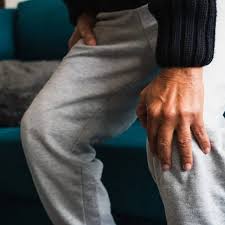 The first step in knee pain treatment is to identify the source of the pain. There are a variety of causes for this condition, including injuries and osteoarthritis. A healthcare provider will be able to recommend the best course of action for your particular case. There are also a variety of OTC pain relievers you can take. It is important to follow the dosage instructions on the bottle, however. NSAIDs, or nonsteroidal anti-inflammatory drugs, can relieve pain by decreasing inflammation and swelling. However, they can also raise blood pressure and increase the risk of heart disease. They can also affect your liver and kidneys if you take them on a regular basis.Knee Pain Treatment Boise is an excellent resource for this.
The first step in knee pain treatment is to identify the source of the pain. There are a variety of causes for this condition, including injuries and osteoarthritis. A healthcare provider will be able to recommend the best course of action for your particular case. There are also a variety of OTC pain relievers you can take. It is important to follow the dosage instructions on the bottle, however. NSAIDs, or nonsteroidal anti-inflammatory drugs, can relieve pain by decreasing inflammation and swelling. However, they can also raise blood pressure and increase the risk of heart disease. They can also affect your liver and kidneys if you take them on a regular basis.Knee Pain Treatment Boise is an excellent resource for this.
In the early stages of an injury, knee pain treatment focuses on reducing pain and inflammation, while others focus on longer-term recovery. The best treatment plans focus on curing the problem, rather than just masking the symptoms. Knee pain may not be indicative of a deeper underlying issue, so it is vital to find out the exact cause. Knee pain treatment can help you recover as quickly as possible.
Various types of therapy are used to manage knee pain, including physical therapy, hyaluronic acid injections, and platelet-rich plasma. In some cases, surgical procedures are necessary to replace a damaged knee joint. However, it is important to remember that these procedures have a number of risks, so you must consult with your doctor before starting treatment.
Ice is another popular treatment for knee pain, and it is an effective method for reducing swelling and pain in the knee. It can be applied to the affected knee by wrapping it with an ice pack. The ice pack should be wrapped in a thin towel, so that it doesn’t cause further damage to the skin. However, ice therapy is not recommended for more than twenty minutes, as prolonged use of ice can cause damage to nerves and skin cells.
An initial evaluation will involve x-rays to determine the cause of your pain. If the pain is caused by arthritis or a loose body in the knee joint, the doctor may recommend an MRI for more accurate visualization. Physical therapy may also be necessary to strengthen the muscles that support the joint. Corticosteroids and platelet-rich plasma injections can help with inflammation and promote healing.
When you suffer from pain in the knee, it is crucial to seek treatment quickly. An ice pack or compression therapy can relieve the pain, and you should avoid using NSAIDs or supplements that can aggravate the pain. It is also important to consult your doctor if you have persistent knee pain and don’t have a clear diagnosis.
Inflammation in the knee causes swelling, which results in a puffy and painful joint. It is important to get a diagnosis quickly, because any delay can affect the healing process. If you are experiencing pain, you may want to consider a knee brace to support the joint and reduce swelling. For additional support, you can consider using pillows to support your knee.
